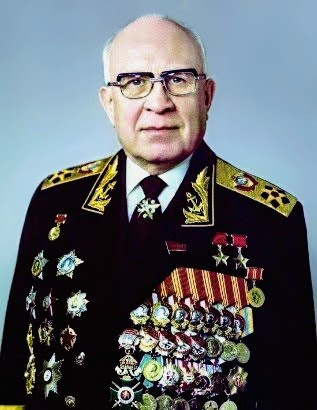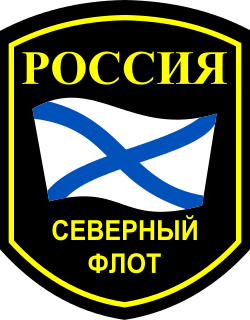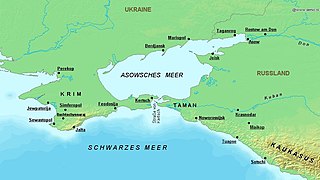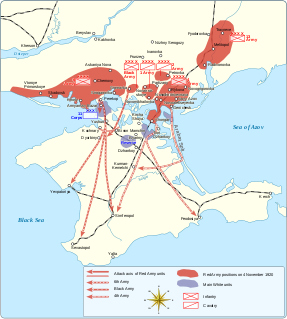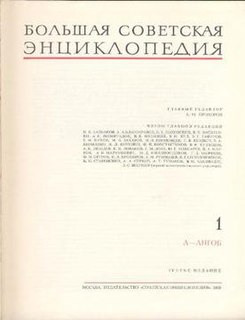This article has multiple issues. Please help improve it or discuss these issues on the talk page . (Learn how and when to remove these template messages) (Learn how and when to remove this template message)
|
The Don Military Flotilla (Russian : Донская военная флотилия) was established in 1723 in Tavrov for countering Turkish vessels in the Sea of Azov. By 1735, the Russians had built 15 prams (flat-bottom artillery sailing ships), some 60 galleys and other ships. Under the command of Rear Admiral Pyotr Bredal, the Don Military Flotilla participated in the Russo-Turkish War of 1735-1739, capturing of Azov, supporting the Russian ground forces in the Crimea etc. In 1739, the Don Military Flotilla was disbanded.

Russian is an East Slavic language, which is official in the Russian Federation, Belarus, Kazakhstan and Kyrgyzstan, as well as being widely used throughout Eastern Europe, the Baltic states, the Caucasus and Central Asia. It was the de facto language of the Soviet Union until its dissolution on 25 December 1991. Although, nowadays, nearly three decades after the breakup of the Soviet Union, Russian is used in official capacity or in public life in all the post-Soviet nation-states, as well as in Israel and Mongolia, the rise of state-specific varieties of this language tends to be strongly denied in Russia, in line with the Russian World ideology.

The Ottoman Empire, also historically known in Western Europe as the Turkish Empire or simply Turkey, was a state that controlled much of Southeast Europe, Western Asia and North Africa between the 14th and early 20th centuries. It was founded at the end of the 13th century in northwestern Anatolia in the town of Söğüt by the Oghuz Turkish tribal leader Osman I. After 1354, the Ottomans crossed into Europe, and with the conquest of the Balkans, the Ottoman beylik was transformed into a transcontinental empire. The Ottomans ended the Byzantine Empire with the 1453 conquest of Constantinople by Mehmed the Conqueror.

The Sea of Azov is a sea in Eastern Europe. To the south it is linked by the narrow Strait of Kerch to the Black Sea, and it is sometimes regarded as a northern extension of the Black Sea. The sea is bounded in the northwest by Ukraine, in the southeast by Russia. The Don and Kuban are the major rivers that flow into it. The Sea of Azov is the shallowest sea in the world, with the depth varying between 0.9 and 14 metres. There is a constant outflow of water from the Sea of Azov to the Black Sea.
At the beginning of the Russo-Turkish War of 1768-1774, the Don Military Flotilla was re-established and, under the command of Rear Admiral Alexei Senyavin, successfully interoperated with the ground forces in the Crimea, participated in the capturing of Kerch and Yenikale (1771), and rebuffed the attacks of the Turkish landing forces in the Crimea. In 1783, the Don Military Flotilla was disbanded due to the establishment of the Black Sea Fleet.
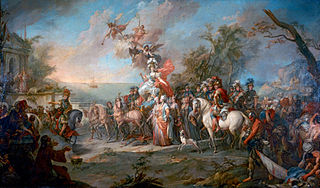
The Russo-Turkish War of 1768–1774 was an armed conflict that brought Kabardia, the part of the Yedisan between the rivers Bug and Dnieper, and Crimea into the Russian sphere of influence. Though the victories accrued by the Russian Empire were substantial, they gained far less territory than otherwise would be expected. The reason for this was the complex struggle within the European diplomatic system for a balance of power that was acceptable to other European leading states, rather than Russian hegemony. Russia was able to take advantage of the weakened Ottoman Empire, the end of the Seven Years' War, and the withdrawal of France as the continent's primary military power. This left the Russian Empire in a strengthened position to expand its territory but also lose temporary hegemony over the decentralized Poland. The greater Turkish losses were diplomatic in nature seeing its full decline as a threat to Christian Europe, and the beginning of the Eastern Question that would plague the continent until the end of the Ottoman Empire in the early 20th century.

Alexei Naumovich Senyavin was an admiral of the Imperial Russian Navy, son of Naum Senyavin.

Kerch is a city of regional significance on the Kerch Peninsula in the east of the Crimea. Population: 147,033 .
The Soviet Don Military Flotilla existed in March–August 1919, assisting the troops of the Southern Front in their struggle with the White Guards along the Don River. Pyotr Dello and then B.F.Korsak commanded the Soviet Don Military Flotilla.

The White movement and its military arm the White Army, also known as the White Guard, the White Guardsmen or simply the Whites, was a loose confederation of anti-communist forces that fought the Communist Bolsheviks, also known as the Reds, in the Russian Civil War (1917–1922/1923) and to a lesser extent continued operating as militarized associations insurrectionists both outside and within Russian borders in Siberia until roughly World War II (1939–1945).
In 1941, a Separate Don Squadron was detailed from the Don Military Flotilla, which would take part in the defense of the Don estuary from the German Army together with the 9th and 56th Armies.

An estuary is a partially enclosed coastal body of brackish water with one or more rivers or streams flowing into it, and with a free connection to the open sea.
The 9th Army of the Soviet Union's Red Army was a Soviet field army, active from 1939 – 43.
The 56th Army was a field army of the Soviet Union's Red Army that was created in 1941, and then disbanded to create the second formation of the Separate Coastal Army in 1943. The 56th Army was employed by the Soviets in the struggle against Germany during World War II.



